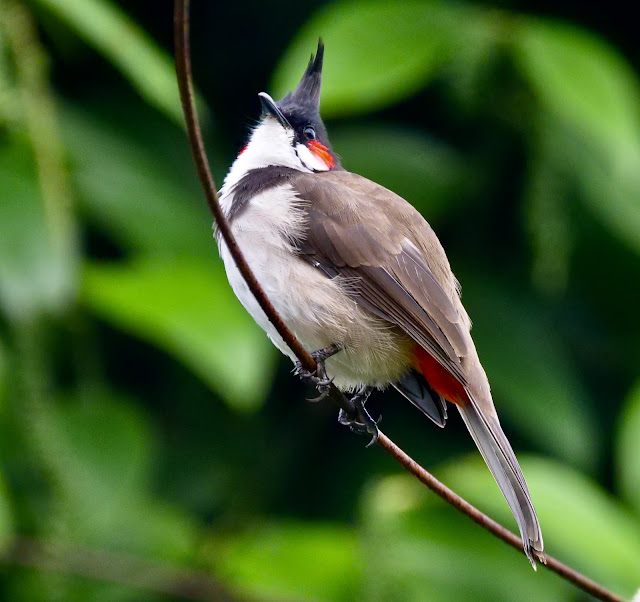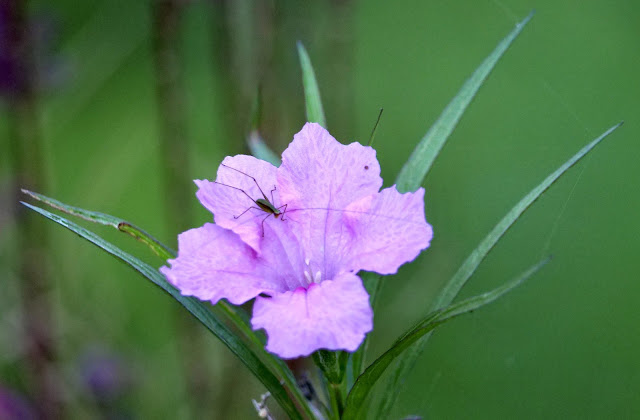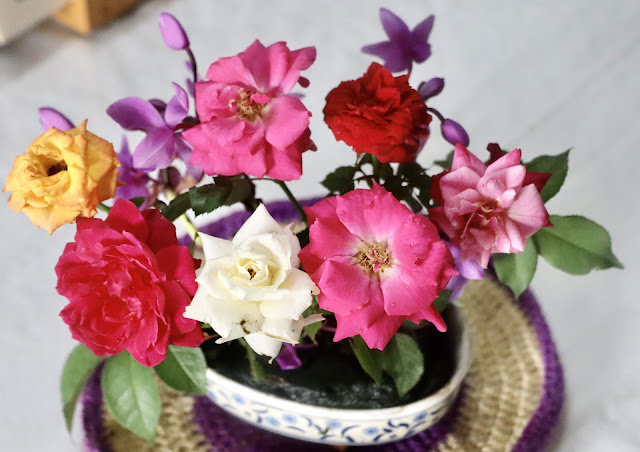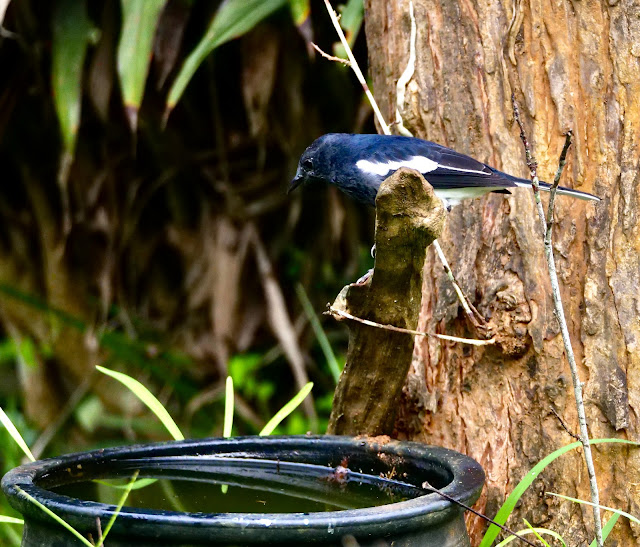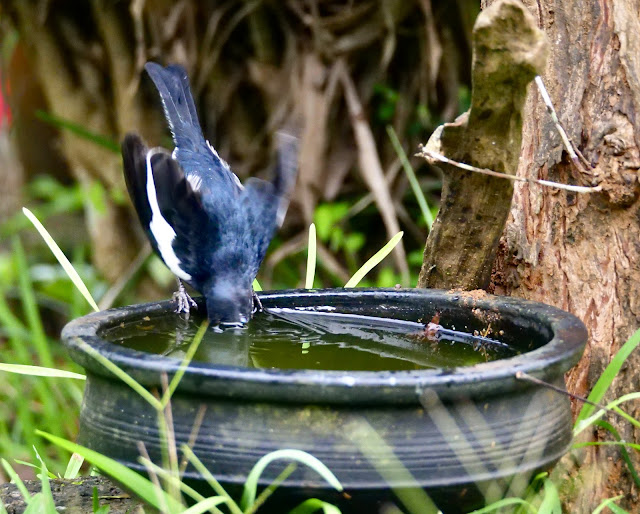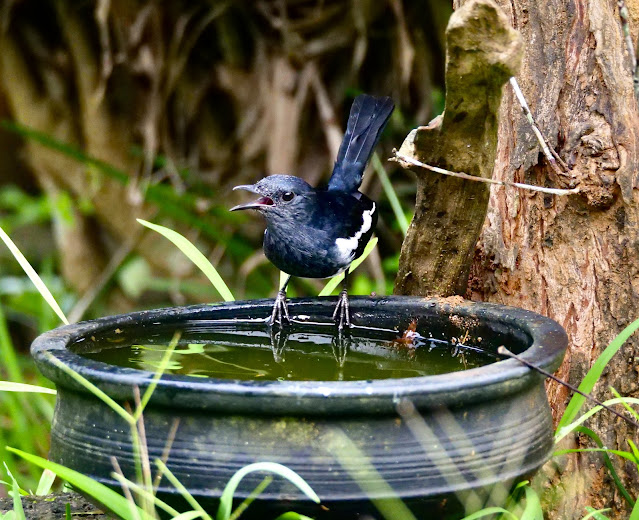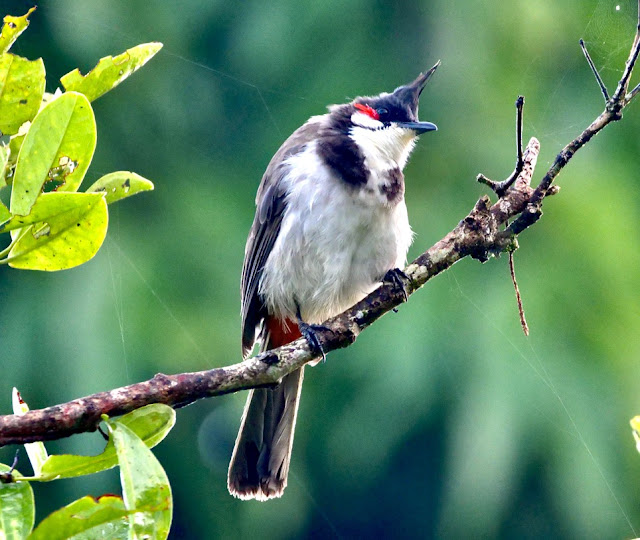
The garden around our cottage is a sound filled space normally with birds moving between trees and bushes for most of the day.
For the last two days, with heavy rain with only short in between dry spells changed the garden to be without its bird activities. I wondered where the birds have disappeared!
The Bulbuls and Magpie Robins who come for their banana feed in our backyard did not arrive. The Tailor bird who sings tunefully was not around. The pigeon who comes in search of nutmeg maize did not appear. The Sunbird pair was missing. A purple sunbird which comes at 3 pm for nectar gathering from the lantana bush, did not come for two days. Few of the Barbets whose chirping become a chanting are missing. The climber Woodpeckers, who are regularly found in the coconut palms did not offer that visual feast. The parakeets who came at mid day to gather the mulberry fruit were missing. The tree pies who are often seen even in rainy weather are no where to be heard.
A friend with whom I enquired about the missing birds, who study bird movements, told me that if there is a threat of strong currents of wind, the birds hide in shelters to feel safe. There are cyclonic storms predicted in the next three days, as there is depression in the Bay of Bengal and Arabian Sea.
I hear the bird calls and go out to look out for them. I went out to wait for the Purple Sunbird to come to gather nectar and it did not arrive. As I ironed back to return to our cottage, I noticed this sent Bulbul on a cable in our court heard. I waited to hear its bird call. During the 20 minutes before it flew away, I found its bills opening little bit without giving its usual bird call(last photo).
This surprised me. To see a Bulbul, who is habituated to make its bird calls, remaining silent raised some questions in my mind!
I found out from some search that Bulbuls become silent when they are anxious. They sense danger and become silent. They are not sociable on such occasions. I watched the several photos I took of its body posture and look to get familiar with the way they behave! Becoming silent might be the first indication of their state of anxiety!
I am familiar with pre-school children expressing anxiety with impulsive behaviour, crying spells, sleep difficulties, naughty behaviour different from the usual, not wanting to eat, disrupting to children play, playing alone, bedwetting at night, etc.
I came across adults expressing anxiety state through short tempered behaviour, sleep interruption, over eating, withdrawing from social contacts, turning to be silent or plunge into self indulgence to drown their sorrow or anger.
The birds also have their patterns of behaviour, when they have have an anxious season!
Becoming silent and wanting to be alone are two common expressions in pre-school children, adults and birds.
They are rather disturbing experiences. Often prolonged anxiety is a prelude to a depressive orientation. A progression to depression from having been anxious without recovery calls for attention and action.
If one were to observe any family, one might find someone or other being in an anxious state. An impending examination creates anxiety to a school going child. A sickness or hospitalisation might make and adult anxious. Some events in the family such as a quarrel, bereavement, grief, relocation, job change, changing residence, stress at work place, etc are regular events in a home. Let me suggest that most people experience anxiety as a normal phase and learn to adapt and overcome. But some people live and behave without the awareness of being in a anxious state.
During my involvements with children who have Neuro-developmental challenges, I often encourage parents to monitor their wellness. A simple exercise of counting their pulse at bed time and on getting up in the morning for about two weeks, would help parents to know when their pulse rate is in the normal range and when it is fluctuating. On such occasions, when the pulse rate accelerates, I have encouraged parents to talk to each other to find out, if there are lingering thoughts which create an anxiety state. I have encouraged parents who are in their middle age, to get a blood pressure apparatus and monitor their blood pressure in the mornings twice a week.
Some feed backs I received gave me an assurance, that if we can create an awareness of the silent anxiety state, to which we slip into, it can also be identified and addressed. An awareness of the risk of anxiety would make a person want to exercise physically, sleep enough, relax with playing indoor or outdoor games, having debriefing time between spouses, read a refreshing story or listen to edifying music, spend more time with children to participate in their play activities, etc.
Anxiety is our silent companion. Anxiety is the beginning of a train of events, disturbing the body and altering the normal physiological functions.
I am normally an anxious person. I am prone to be wanting be quiet when I sense the emotional lability within. There was pattern of outburst with reactive statements, but they do not recur now as much as in the past. But wanting to stay away from regular routine, and stay preoccupied with rumination of thoughts seem to be a pattern in the recent years.
All of us travel through terrains, where anxiety silently or overtly affect us. It is a normal experience.
Every time I walk in to the quiet room, where I spend most of the day, I have anxious thoughts about the day ahead. The first half an hour each day is to listen and feel the anxious thoughts and respond to them attentively. The awareness of their presence within is one way of owning them and acting upon them.
Today, it was the anxiety about the electricity connection getting disrupted due to the heavy rains. So it was necessary to pump water to the overhead tank, make sure that that the inverter is charged fully and we put off all the electronic equipment if there is an indication of thundering and lightning. When I attended to these thoughts I did feel that those thoughts faded away and the inner ambience was more sober and ready to engage the writing project Initiated.
A friend who called me in the morning today, recalled a conversation when Anna and I visited the family, about their anxiety of some pressing matters. The discussions was about doing what they can about those matters and waiting for the heaviness to fade away. It was good to hear how an awareness of the causal pathway to anxiety can be identified and attended to, so that we escape the psycho-behavioural and somatic effects of an anxiety state!
The silence, fretful look and body posture of a Bulbul as seen in the photos above, might have been due to an anxiety due to the inclement weather.
It is not always possible to describe the anatomy of anxiety; but it is good to develop the skill to trace the causal pathway. 'The way in, is the way out' was an often repeated statement of Dr Hans Burke', during the seminars, he conducted to lead us into a life revision experience.
It requires only a pebble to disturb the stillness of a pool of water. An anxious thought has creates a ripple effect in our mind.
I found a personal confession of David, the author of many Psalms, about himself in Psalm 131, verse 2 useful and edifying: 'I have composed and quieted my soul; like a weaned child rests against his mother'. A weaned child is a well fed child. David having nourished himself in God consciousness and meditation, was well fed to be able to rest. Some scholars mention 'resting against his mother' as a symbol of intimacy with God, which he experienced during those nourishing times.
To live with the existential thoughts without them becoming anxiety generating, is possible through this habitual exercise of experiencing the presence and comfort of God.
Turning inward to attend to the causal pathway of our anxiety and practising to rest in God are in our domains to act upon.
It is good to find a Bulbul singing !
M.C.Mathew(text and photo)
